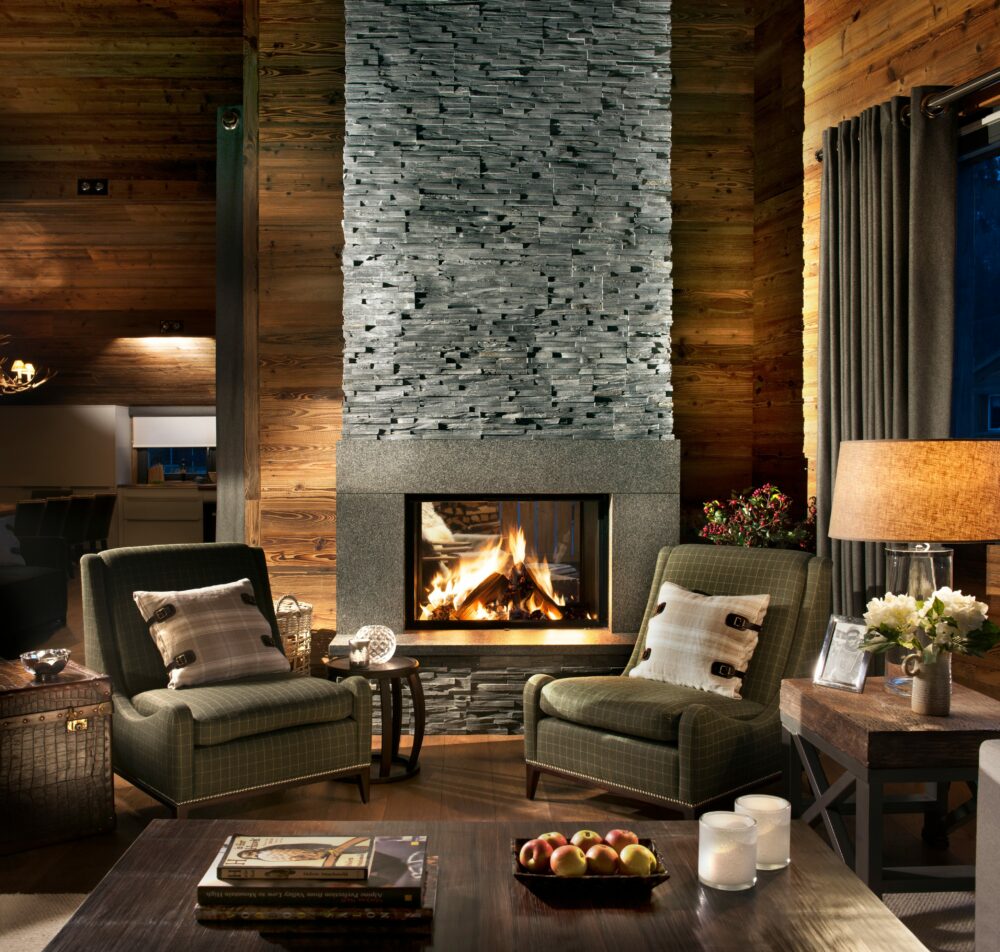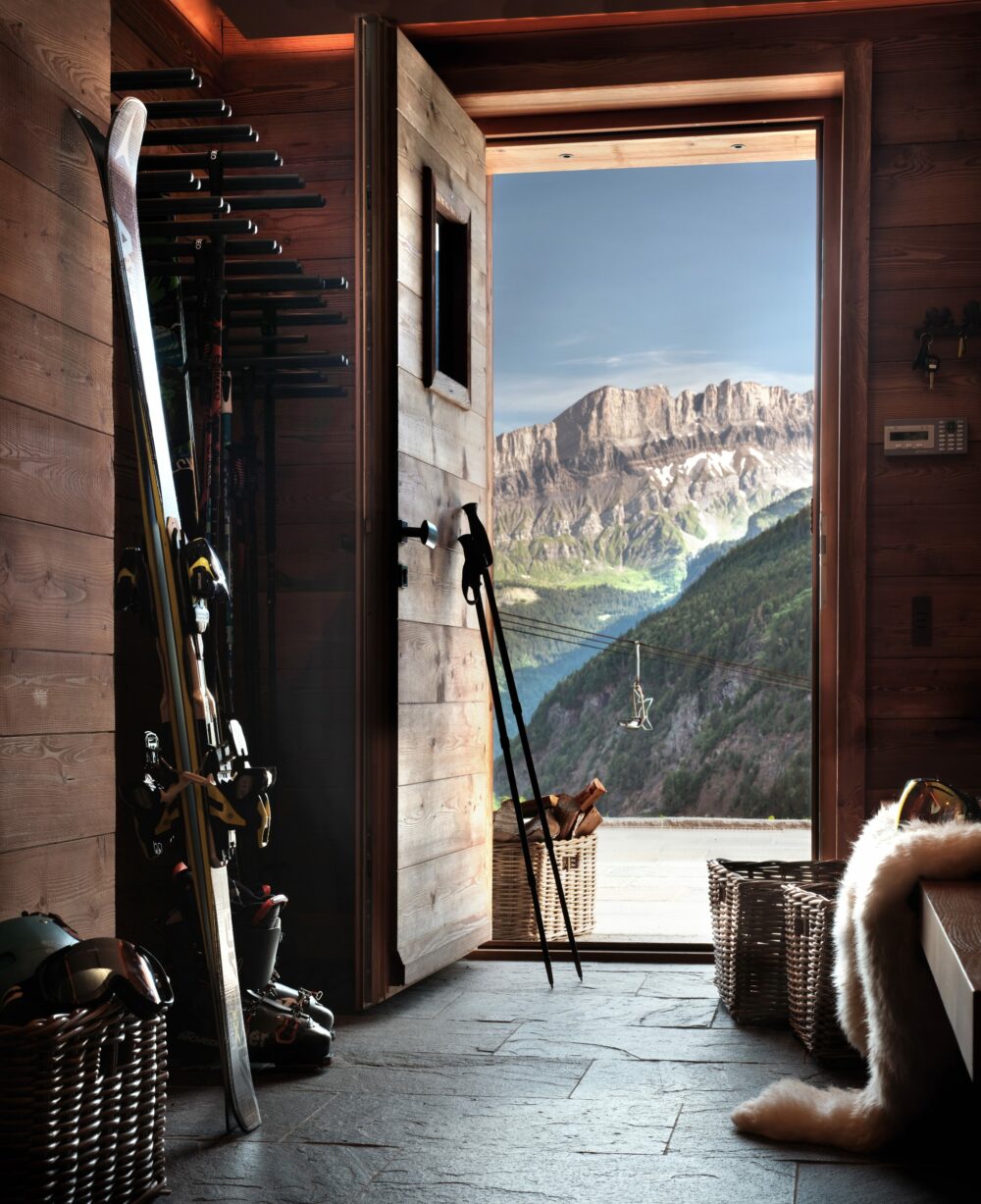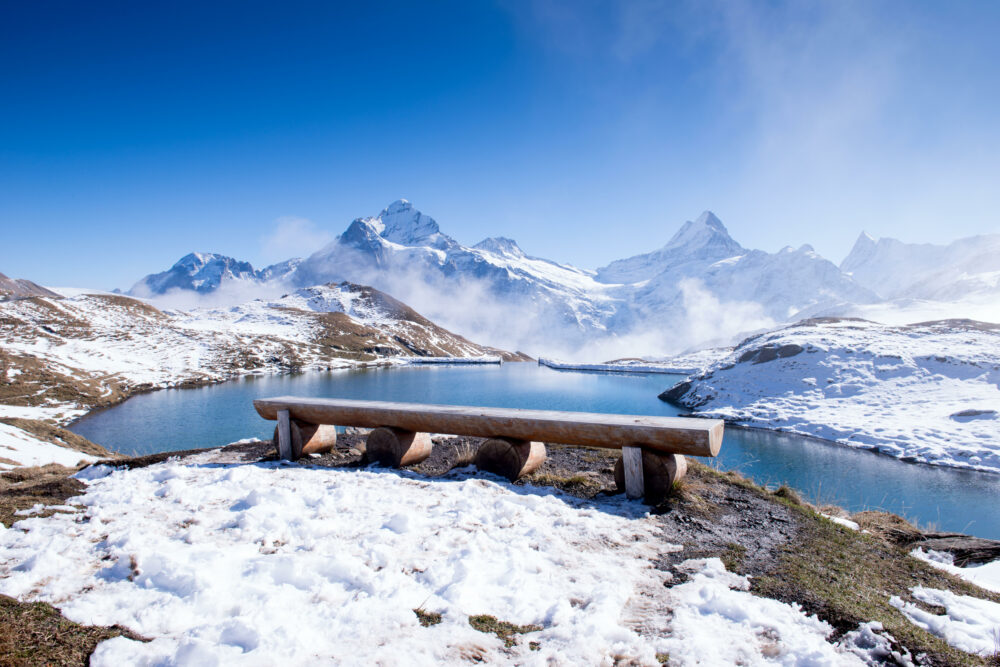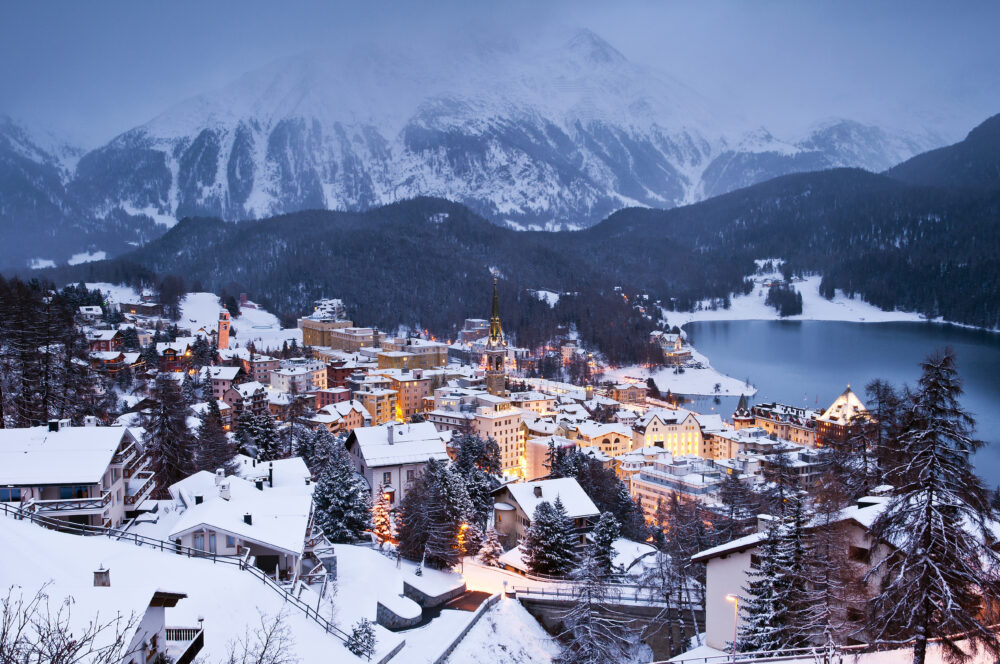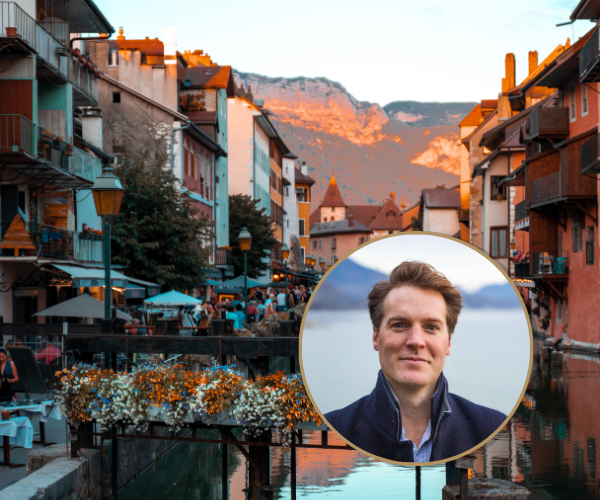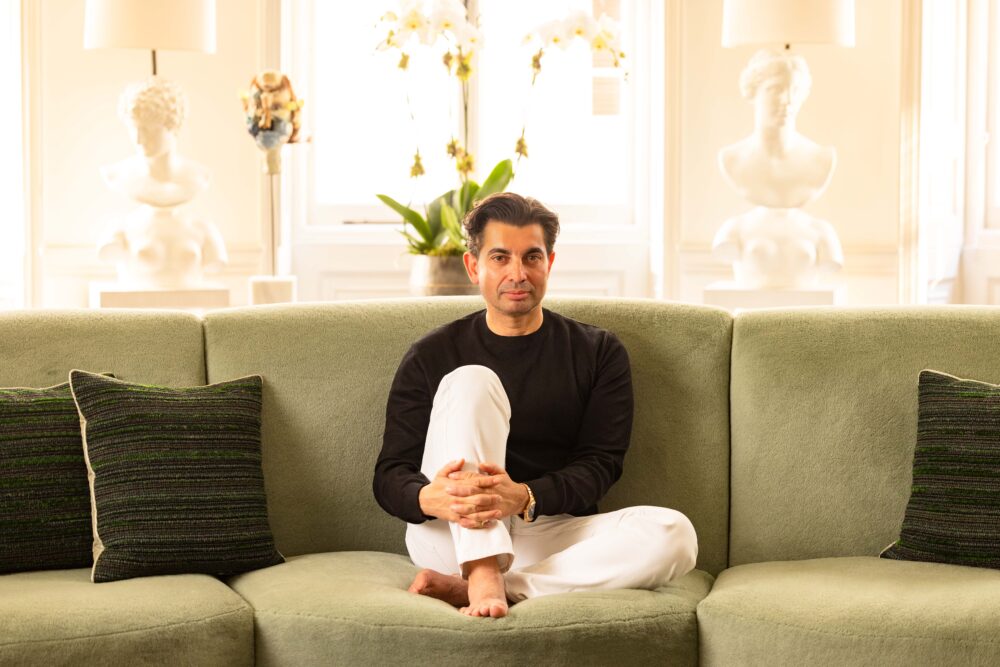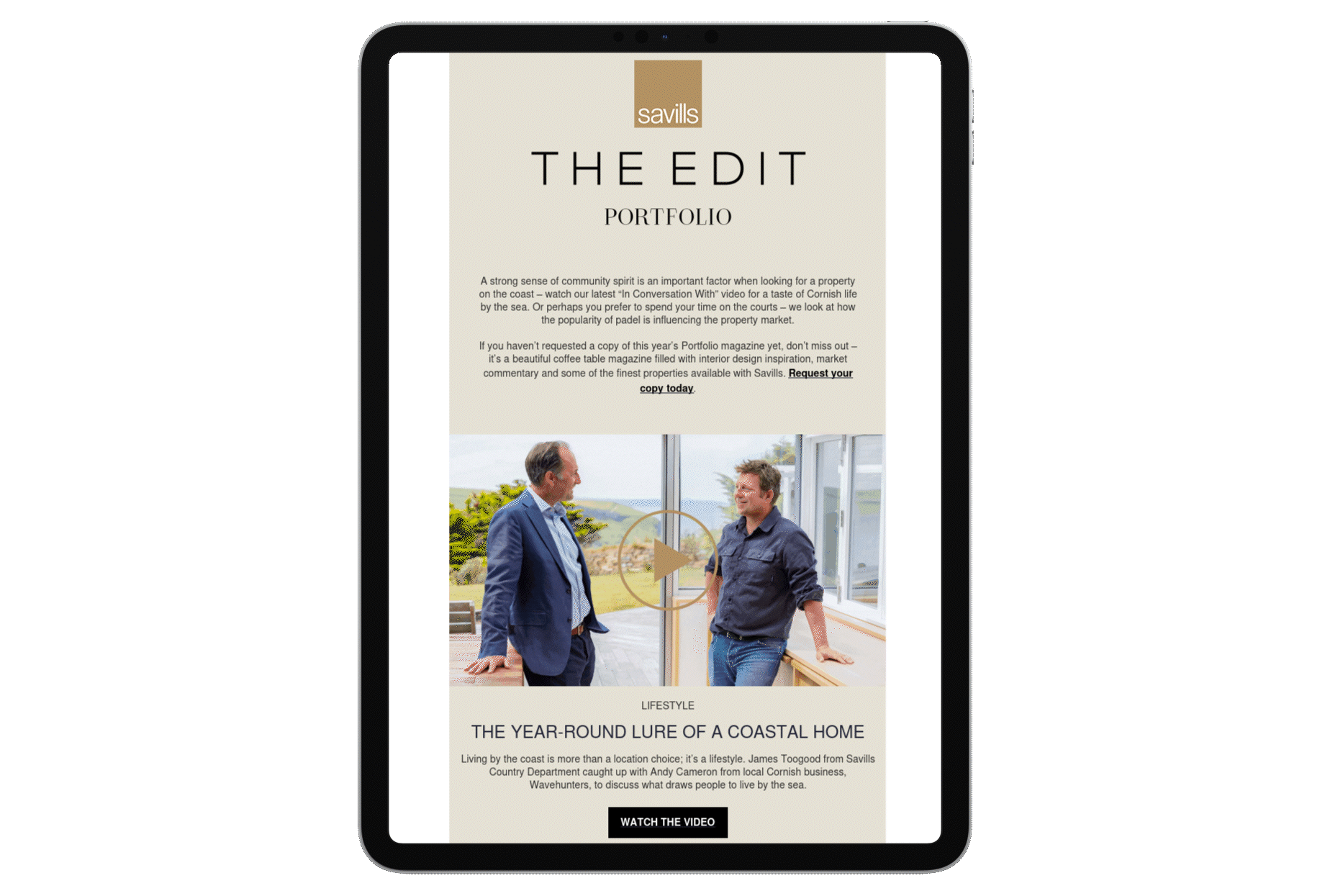Nicky Dobree is an award-winning interior designer who has built a stellar reputation for her luxurious classical-meets-contemporary style, with a portfolio covering Mediterranean villas, country and city homes, hotels and ski chalets. The transformation of her own chalet, an 18th-century farmhouse in Les Gets, in France, won praise from design guru Kevin McCloud back in 2003 when it featured on Grand Designs – McCloud described it as “the ultimate James Bond pad”. Based in London but with regular commutes to the Alps, Dobree is currently at work on her 50th chalet, a substantial private home in Val d’Isère. Here, she outlines her passion for the Alps and reveals her design tips for a supreme mountain retreat.
Tell us about your own Alpine property?
We bought a dilapidated farmhouse in the French Alps in 2000 when our two sons were very young, and we did a total renovation. We bought it as a family escape from our busy London life – what’s better for children than the activities and fresh air of the mountains? It has been a fabulous family home and holds the most special memories. And it’s still a total escape for us all. It’s where we entertain family and friends, where we have our down time, and we use it – and love it – as much in summer as in winter. It represents a total recharge as well as being somewhere we can work from. It has been invaluable.
Over the years, how have clients changed the way they use their chalet?
The mountains have always had a majestic appeal as somewhere to head to for mental and physical wellbeing and a healthy lifestyle, all more important than ever today. Covid has had a major impact on people’s lifestyle. The changing world of work has let us re-evaluate where we want to base ourselves. Increasingly, clients see their chalets less as a holiday home and more as a primary residence, a year-round destination from where they can dip backwards and forwards to the UK as required. This summer, when it was so unbelievably hot in the city, the mountains became the most wonderfully refreshing retreat. The Alps offer the best of both worlds, a summer and winter lifestyle with four distinct seasons. The weather changes, the scenery changes and the activities change.
Which features characterise your projects?
Every client is different, of course, and it is their home, not mine, but by default there are some universal principles that I bring to every project. The architecture of the building is always the starting point, whether in the mountains or the Mediterranean. A successful building must sit well in its environment, function in the climate and have a soul. I aim to create calm, harmonious spaces, ones that are timeless, elegant and comfortable, where nothing jars. My philosophy has always been “Buy once, buy well”. When you build or renovate, do it once and do it well. There’s no better sustainability goal. If you were to see my own chalet today, you would instantly recognise it from Grand Designs 20 years ago. Nothing has changed. Families grow up with the pieces you put in your home. If they are bought well, they wear well and become part of your personal story.
Which materials do you use?
Timber, of course, lots of timber. It’s the most magnificent material to work with but only if chosen and used well. The quality and type of timber is key and will completely affect the outcome of your project. I use natural and local materials wherever possible – timber and stone – then add contemporary finishes: a lacquered wall or coloured glass in kitchen cabinets. To counter the hard surfaces, I use soft fabrics, cashmere, linens and wools. Balance is key.
What are the challenges of working in the mountains?
I’ve worked in almost every major Swiss and French resort over the years, including Gstaad, Verbier, St Moritz, Klosters, Val d’Isère, Chamonix, Méribel and the Three Valleys. Before training as a designer, I did a language degree and I am fluent in French and Italian, which has helped immeasurably. Having lived and grown up abroad, I understand the culture of the countries where I work. All Alpine projects are a challenge because the logistics are generally complicated by the short construction seasons and working at altitude. It’s always a tight window from May through to the end of November, when you aim to get the structure up and the roof on, and even then you are dependent on the elements and access. We’ve worked on several projects where everything had to be done by helicopter. After so many projects, and thanks to my wonderful team, we have it down to a fine art.
What are the classic design mistakes you see in the Alps?
The choice of the timber and how it is placed on walls or ceilings is easy to get wrong. There’s a fine balance between using so much that it feels like a sauna or so little that you only see plaster. Lighting is critical too because timber absorbs light, and you need a good mix at high and low level to set the mood. Many people struggle with getting the scale and proportion of furnishings right and ensuring a good flow through the chalet. Living in the mountains demands certain considerations that must be well planned too. Where will you take your ski boots off, are there enough comfortable spaces for different age groups and activities, how will you clear snow from your balcony? The list is endless. And then there’s my personal bête noire: short curtains on windows.
What facilities do clients expect in their chalets today?
Spas are getting ever more fabulous, with dedicated areas for a pool, hammam, steam and massage. A proper cinema too, not just a giant screen. People want a bar, a true party room. There seem to be a lot more post-Covid dog owners and I’m getting asked for dog showers in boot rooms. People want variety from their interiors. As they stay for extended periods, they don’t want the same dining experience every night so, space permitting, we create different options, perhaps a panelled dining room on a different level to a more informal one upstairs. Clients are thinking deeply about their chalets. They understand that this is where memories are created, those special moments that we just don’t get enough of in our hectic world.
Pictures from top: this cosy corner in a chalet benefits from the inclusion of local stone and timber; the deck of an Alpine chalet designed by Dobree; a bold panelled dining room with a feature chandelier and colour-pop chairs; an interior with stylish timbers; designing for the mountains means making the most of sensational views




